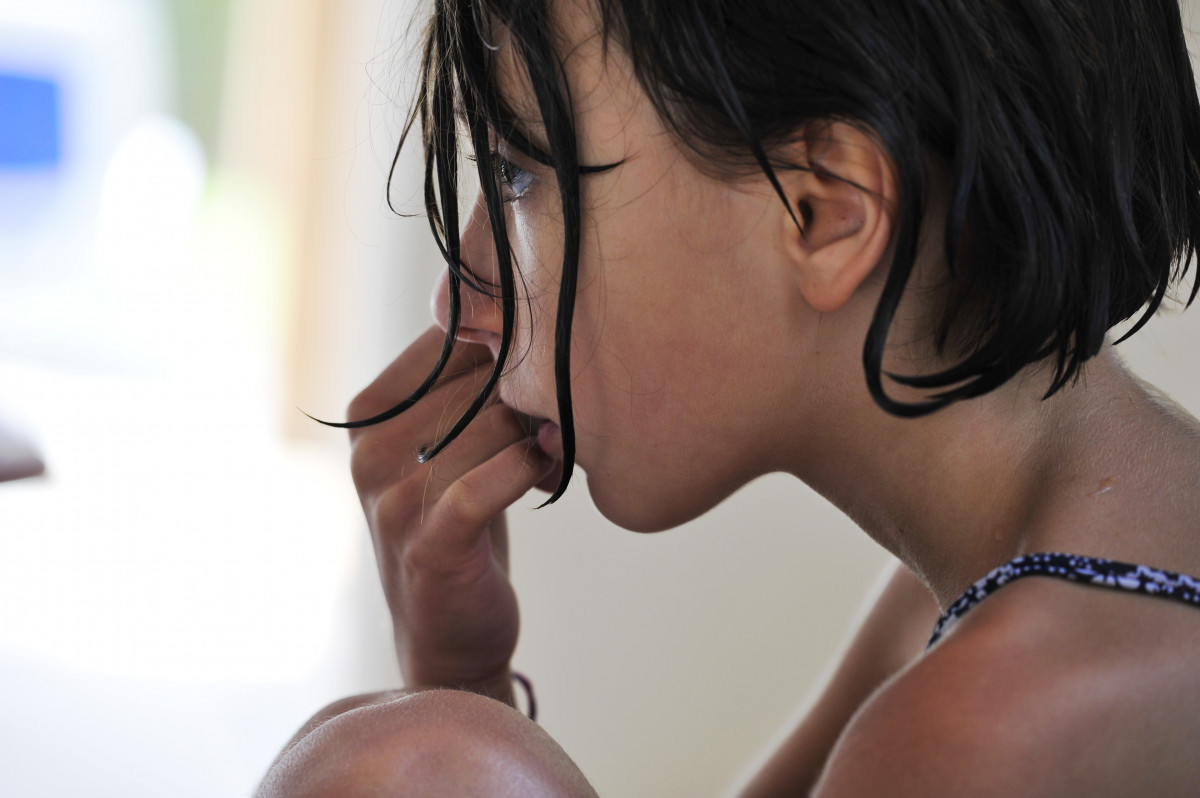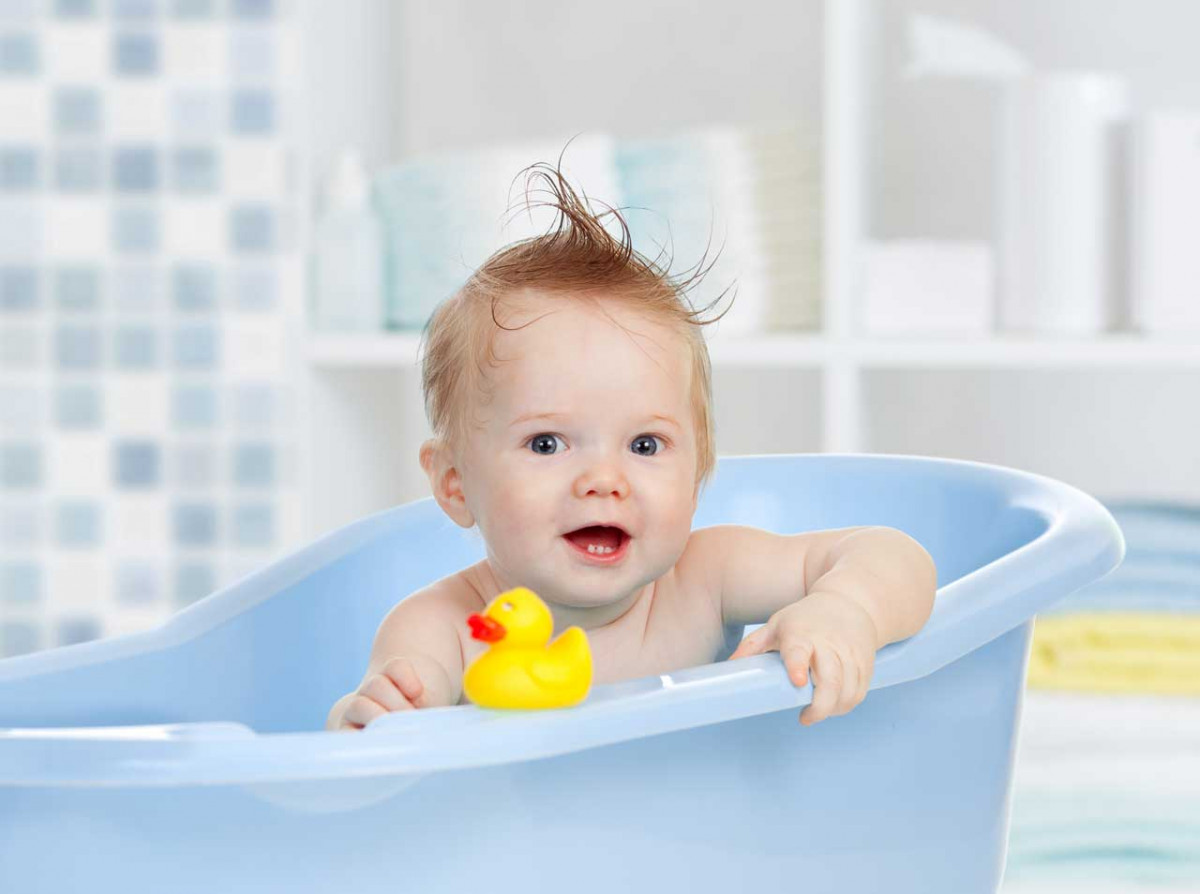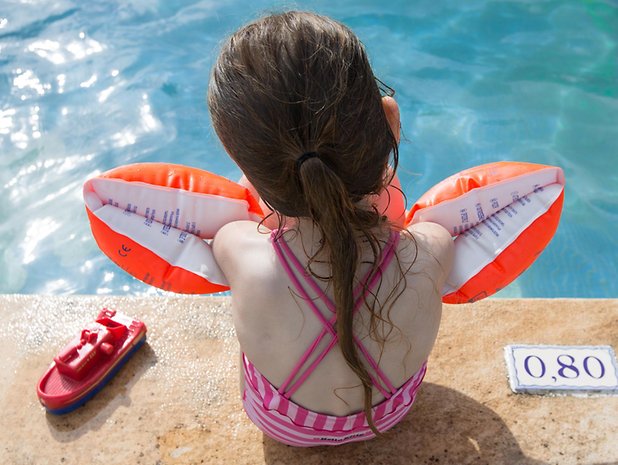Reading time: 3 minutes Not every child is a born water rat. On the contrary, there are many children who are afraid of the water. Parents need a lot of patience to help them lose fear of swimming. Instead of working with pressure, it is better to familiarize the children with the wet element playfully and step by step.

How children overcome the fear of swimming
Fear of water and swimming
It is not always understandable for parents why their offspring is afraid of water. Put yourself in the child’s situation. There is this shiny, shiny surface that looks solid but does not support the body. It is also loud in the swimming pool, it reverberates and the other children splash while swimming with water. And you’ve already choked on the water and no longer get air. In addition, parents near the water are concerned about their child and this uncertainty can be transferred to the offspring. One little thing is often enough to disturb children. It is quite understandable. Always remember that an anxious child takes time to build trust in the foreign environment and the wet element.
Confidence takes away the fear of swimming
Sometimes a child has had bad experiences in the swimming pool and has been submerged by another child, for example. Sometimes children have a personal aversion to water. However, be careful with your child’s fear of swimming. If you exert pressure and force your child into the water, you ensure that the fears worsen dramatically. And besides, your child no longer trusts you. Every child is different and it is perfectly fine if some children are suspicious of the water. It is not a problem if the child prefers to sit and watch the pool edge the first time they visit the swimming pool or swimming course.
This is how children get used to water
If your child is afraid of the water in the bathtub, do not go to a swimming pool yet. Try to reduce the fear of water with small steps. Put your child in a small carrycot or plastic laundry basket. The child determines how much or little water there is in the tub. Waterproof toys also help to distract the child from his fears. Read more tips on how children lose fear of bathing.
Tips for visiting the swimming pool
- If your child has lost the fear of water in the bathtub, start a visit to the swimming pool. Avoid rush hours when the bathroom is very crowded and noisy. Better go to the bathroom in the morning when things are calmer.
- Explain to your child, possibly still clothed, all the rooms in the swimming pool. It is allowed to take a look at changing rooms, toilets, showers and swimming pools etc..
- Beware of the showers. Initially, only take a shower when the room is empty. Your child stands in a corner where it is safe from splashes. Now press a shower. It doesn’t matter if your child initially doesn’t dare to take a shower. Small steps help here too. If the child has got used to the premises, the next visit may already stretch one hand under the shower. And next time the feet shower. Sometimes children like to carefully approach the shower in their parents’ arms. Make sure that no splashes land on the face.
- After swimming, wash your child with a washcloth or bathe them at home.
- Explain the most important rules to your child in the swimming pool: Do not pollute the water in the swimming pool, do not run on the damp tiles and do not jump off the edge of the pool.
- First, visit only a swimming pool with a separate children’s area. It is quiet here and the small paddling pool is manageable for your child. The colorful play equipment also distracts from the water.
- Once the child has got used to the swimming pool atmosphere, make the first visits to the non-swimmer pool. A bathroom with a slowly sloping floor is ideal. Show your child where to stand comfortably.
- Your child will always wear swimming aids in the non-swimmer area.
Always stay with your child, as swimming aids do not replace the parents’ duty of supervision. - Playfully try to get your child used to the wet element. Swimming boards have proven themselves. The child grabs the board and can float on the water. This is how it learns that water supports the body.
- Think about some water features, for example push your child over the water surface. Or the child lies on the water with a flat back, supported by the arms of the parents.
- Try to reinforce the positive sensations in the water, for example by making frequent physical contact.
- Never disappoint your child’s trust by secretly pulling your arms away. It is also not a problem if your child does not like to put his head under water. If you manage to make your stay in the water positive for the child, they will gradually lose their fear of swimming. Then it doesn’t panic anymore when it gets water in the face.
Water familiarization course
If your child enters the swimming pool without fear, register them for a water diving course. Here the children learn to use the water in a playful way and also to immerse their heads. It is important to have a well-trained swimming instructor who is responsive to anxious children. At the age of four to five years, but at the latest at primary school age, children should learn to swim and take the so-called "seahorse". Stay calm. It is not always easy for parents if everyone Children excited jump from the edge of the pool and your own child is scared. But if you stay patient, your child will lose his fear of swimming.
Photo credit: S.Kobold / stock.adobe.com
PS: Quality management is important to us!
Please let us know how you like our contribution. To do this, click on the asterisks shown below (5 asterisks = very good):
RELATED ITEMS
-

10 tips take away the fear of bathing for children
Reading time: 4 minutes Babies and toddlers go through different phases in which they suddenly develop fears. There is not always a specific one…
-

Fear of the dentist – you can do that as an anxious patient
How Anxiety Patients Defeat Their Fear Dental fear is common. It develops slowly in some patients and therefore remains…
-

3 tips to overcome the fear of darkness
by Sebastian D. Kraemer · September 22, 2017 Overcoming fear of darkness The fear of darkness is a primal fear of humanity. If the…
-

Learning to swim: How parents teach their children to swim themselves, Berlin newspaper
It’s this way . : The Berliner Zeitung has moved Nine tips: How parents teach their children how to swim 03.07.18, 1.30 p.m. 59…
